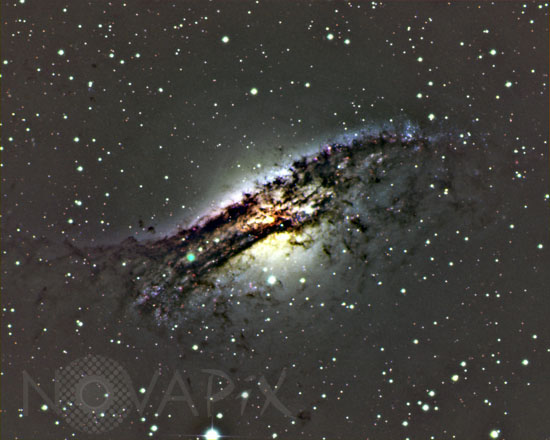Photo Agency - Astronomy - Space - Nature

Central part of the galaxy Centaurus A (NGC 5128)
author: Anglo-Australian Observatory/David Malin Images/Novapix
reference: a-gax51-28014
Image Size 300 DPI: 51 * 40 cm
The nearby radio source Centaurus A (NGC 5128) looks like an elliptical galaxy, crossed by a broad, irregular dust lane. The dark band is probably the remains of a dusty spiral galaxy which is being absorbed by the giant elliptical. One of the nearer galaxies, 13 million light years away, Centaurus A is the most powerful nearby radio source and is also a copious source of X- and gamma rays as well as visible and infrared radiation.The three plates which were combined to make this colour picture have been copied to enhance the fine detail of the dust lane and to suppress the bright background of the elliptical galaxy. This process reveals many tiny red star-forming regions, especially prominent towards the end of the dust lane, and the clumps of young blue stars recently formed from them. The curious green star in the dust lane is because the blue and green-light plates were taken when supernova 1986g had just appeared, while the red-light plate was taken a year later when the supernova had faded.
Contact : Stéphane Aubin +33-(0)9-51-26-53-76
© Novapix - All rights reserved


